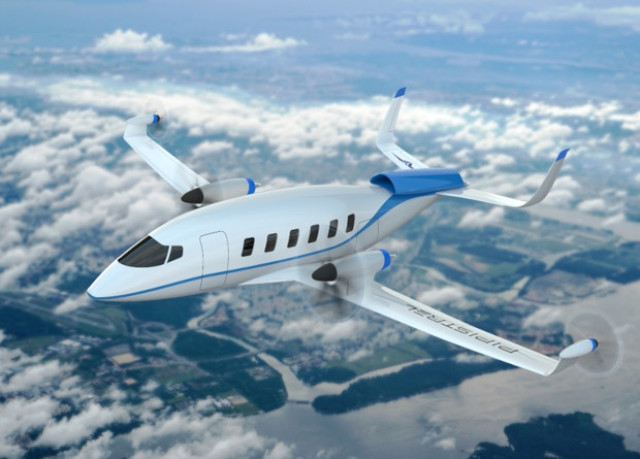The Slovenian company Pipistrel has completed research work on the project of the Miniliner hydrogen passenger aircraft, which is planned to be used on short-haul routes. According to the company, the work was carried out on the project UNIFIER19, which also involved the Polytechnic University of Milan and the Delft Technical University.
Environmental requirements for aviation are getting tougher every year, and aircraft developers have to look for new technical solutions that would reduce the impact of aircraft on global climate change. For this reason, many companies in the world are developing electric and hybrid aircraft, whose harmful emissions will be significantly lower than modern airliners.
Hydrogen-powered electric aircraft are considered practically environmentally neutral, since the only product released when hydrogen fuel cells operate is water. Development of the Miniliner aircraft under the UNIFIER19 project with the financial support of the European Union as part of the pan-European Clean Sky 2 program. It involves the creation of new types of environmentally friendly and economical aircraft.
The promising Miniliner hydrogen passenger plane will be designed to carry 19 passengers. The developers expect that it will be able to use for takeoff and landing strips no longer than one kilometer, including airfields with a grass surface. The Miniliner is designed for use on routes ranging from 200 to 1000 kilometers in length. It is planned to start commercial operation of the new aircraft in 2028-2030.
The preliminary draft design involves the development of a low-wing plane with four electric motors. Two of them with pulling propellers will be located above the wing closer to its root. Two more electric motors with small propelling propellers, the developers intend to place on the winglets curved upwards on the wing. The tail unit will be made two-keel with keels placed on the ends of the horizontal tail.
Other details about the prospective hydrogen passenger plane have not yet been revealed.
In September last year, the American company ZeroAvia conducted the first flight tests of the HyFlyer hydrogen passenger aircraft with connected hydrogen tanks. The new aircraft is based on the Piper M350. The aircraft is designed to carry six passengers.
Vasily Sychev

